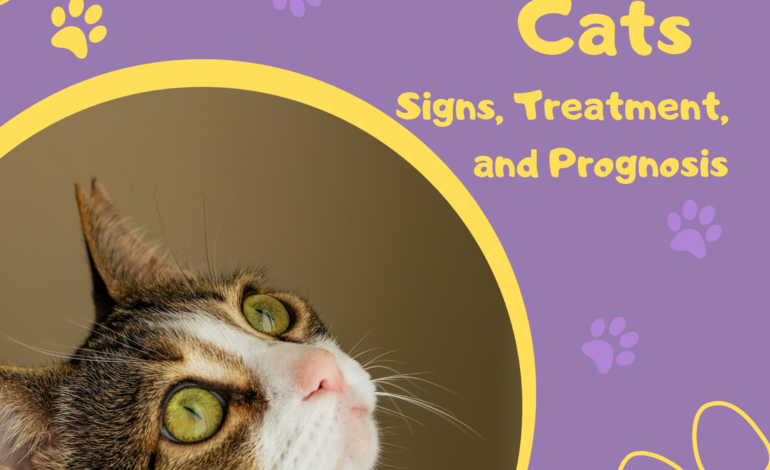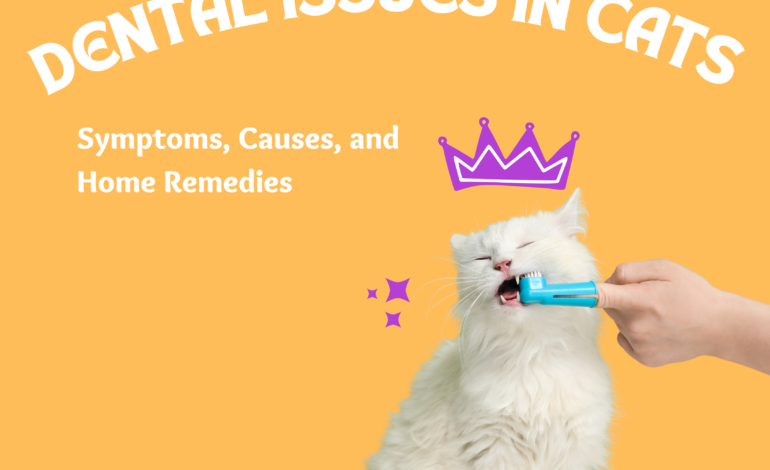Diabetes in Cats: Signs, Treatment, and Prognosis

Did you know that roughly 1 in every 200 cats will develop diabetes during their lifetime? While it’s not the most common health issue, catching it early can make all the difference in your cat’s quality of life. Subtle changes — like drinking from the water bowl more often, using the litter box more frequently, or losing weight despite having a good appetite — can all be early signs of diabetes in cats.
Recognizing these red flags and getting your cat to the vet quickly gives you the best chance of managing the condition and keeping your furry friend happy and comfortable for years to come.
What Is Diabetes in Cats?

Diabetes in cats is a long-term condition that occurs when the body is either not producing enough insulin, or has become resistant to insulin, resulting in higher blood sugar levels and other health problems. Though one of the most widespread endocrine diseases in cats, it often passes unnoticed to begin with, being diagnosed in around 1% to 4% of cats over its lifespan.(1)
Being obese is a significant risk factor – overweight cats are 2–4 times more likely to develop it, and too much fat around the abdomen can contribute toward insulin resistance. American middle- to older-aged cats (usually in the age range of 10 to 12) are most commonly affected, and a predisposition seems more common in specific breeds such as Burmese and Norwegian Forest cats.
The good news is that in a number of cats, if diagnosed and treated early they can achieve remission and may not need to be on insulin long-term. Subtle early signs — excessive thirst, repeated trips to the litter box and unexplained weight loss despite a good appetite — are important clues, which is why prompt veterinary attention is so important to manage the disease and keep your cat comfortable and healthy.
Types of Diabetes in Cats

Feline diabetes isn’t one-size-fits-all. Understanding the type your cat has is key to managing it effectively.
Type I (Insulin-Deficient Diabetes) – Rare in Cats
While dogs and humans see Type I more frequently, cats rarely develop this form. It occurs when the pancreas stops producing insulin altogether, often due to autoimmune damage to beta cells. In cats, it’s usually triggered by unusual immune responses rather than genetics alone, making early detection challenging but critical.
Type II (Insulin-Resistant Diabetes) – Most Common in Cats
Type II accounts for the vast majority of feline diabetes cases—around 80–95%. (2) Here, the pancreas still produces insulin, but the body doesn’t respond efficiently. Obesity is the biggest risk factor, especially fat concentrated around the abdomen, which interferes with insulin signaling. Interestingly, even cats that aren’t visibly overweight can develop insulin resistance if they have chronic inflammation, pancreatitis, or prolonged stress. Middle-aged to older males are most affected, but female cats aren’t entirely exempt.
Insights:
- Reversibility: Some cats with Type II can achieve remission through strict diet management, weight loss, and early insulin therapy—something rarely emphasized in general guides.
- Breed Nuances: Burmese cats appear to be at a slightly higher risk, suggesting genetics plus lifestyle play a role.
- Lifestyle Connection: Sedentary indoor cats may develop insulin resistance faster than active cats, even with similar weights.
Recognizing the Signs of Diabetes in Cats

Catching feline diabetes early can dramatically improve your cat’s quality of life. Many of these signs are subtle at first, so attentive pet parents often notice changes before a vet visit confirms the diagnosis.
Increased Thirst and Urination (PU/PD) – Often the first hint. Cats may start visiting the water bowl more frequently or having extra trips to the litter box. Subtle increases can easily go unnoticed, especially in multi-cat households.
Changes in Appetite – Early on, cats may seem hungrier than usual, but over time appetite can decline, sometimes dramatically, as their body struggles with fluctuating blood sugar.
Weight Loss Despite Eating Well – One of the classic red flags. Even a cat with a seemingly healthy appetite may shed pounds because their body can’t properly use glucose for energy.
Poor Coat Quality – A dull, greasy, or flaky coat can indicate that nutrition isn’t being properly absorbed due to high blood sugar levels.
Lethargy and Behavioral Changes – Cats may become unusually irritable, hide more often, or show less interest in play. Weakness and low energy are common as diabetes progresses.
Plantigrade Stance (Dropped Hocks) – A more advanced symptom where nerve damage affects the hind legs, causing cats to walk with their hocks touching the ground.
Vomiting and Muscle Wasting – Late-stage indicators. Persistent vomiting, along with muscle loss, signals prolonged uncontrolled diabetes and needs urgent veterinary care.
Pro Tip: Even minor changes in drinking, urination, or energy can hint at early diabetes. Keeping a short daily journal of your cat’s habits can help catch these subtle signs before serious complications develop.
Risk Factors for Cat Diabetes
| Risk Factor | Details | Impact / Notes |
| Obesity & Sedentary Lifestyle | Overweight cats, especially with abdominal fat | 2–4× higher risk; modest weight loss reduces risk |
| Age | Middle-aged to older cats (10–12 years) | Healthy weight & activity lowers incidence |
| Gender & Neutering | Neutered males | Metabolism and fat distribution changes may increase insulin resistance |
| Breed Predisposition | Burmese, Norwegian Forest, Tonkinese | Genetics may affect pancreatic function and insulin sensitivity |
| Medications & Concurrent Conditions | Long-term steroids, hyperthyroidism, pancreatitis | Hormonal or organ dysfunction can trigger secondary diabetes |
| Monitoring Tip | Observe at-risk cats for subtle signs | Increased water intake or mild weight changes can enable early detection |
Diagnosing Diabetes in Cats

Detecting diabetes early can transform outcomes. Beyond the obvious signs like excessive thirst or weight loss, vets often rely on a combination of tests:
- Owner Observations: Even subtle changes—extra trips to the water bowl, mild coat dullness, or increased nighttime activity—can hint at early diabetes.
- Blood Glucose & Urinalysis: Confirms elevated sugar levels and checks for ketones or glucose in urine. Spotting mild hyperglycemia early can prevent serious complications.
- Fructosamine Test: Offers a snapshot of average blood glucose over 2–3 weeks, helping distinguish stress-induced spikes from true diabetes.
Case Insight: In a recent vet review, cats flagged by owners for slightly higher water intake were diagnosed weeks earlier than those showing classic symptoms, improving long-term prognosis.
Cat Diabetes Treatment and Management
| Management Area | Key Points | Tips / Insights |
| Insulin Therapy | Daily injections; type & dose per vet | Consistency + gentle handling reduces stress; some cats can achieve partial remission with proper management |
| Diet & Nutrition | Low-carb, high-protein wet food | Stabilizes blood glucose; tailored diets may lower insulin needs |
| Weight & Exercise | Maintain healthy weight; keep active | Interactive indoor play improves insulin sensitivity |
| Monitoring Blood Glucose | Home glucometers or urine strips | Track trends over time; single readings matter less than patterns |
| Veterinary Check-Ups | Regular monitoring & insulin adjustment | Early detection of complications improves outcomes; diet + monitoring can increase remission chances |
Prognosis for Cats with Diabetes

Can Cats Go Into Remission? – Most of these cats can be made to go into remission by early diagnosis, treatment with insulin and a carefully manipulated diet. Remission entails the possibility your cat may no longer require daily insulin though continued monitoring is important.
Long-Term Quality of Life – With proper management (diet, exercise and regular vet visits) cats with diabetes can be happy active pets! The sooner a cause of the problem is found and dealt with, the better – even when it comes to maintaining your quality of life.
When to See a Vet Immediately
Diabetic cats usually show subtle signs at first, but some situations require urgent veterinary attention. Emergency signs of diabetic ketoacidosis (DKA)—a potentially life-threatening complication—include:
- Loss of appetite or refusal to eat for more than a day
- Persistent vomiting
- Severe dehydration (dry gums, sunken eyes)
- Rapid or labored breathing
- Lethargy, weakness, or collapse
- Coma in extreme cases
If your cat exhibits any of these symptoms, seek veterinary care immediately. Early intervention can be life-saving and prevent severe complications.
Cost of Treating Diabetes in Cats
| Expense Category | Initial Cost (CAD) | Ongoing/Monthly Cost (CAD) | Notes |
| Veterinary Consultation & Diagnosis | $150–$300 | N/A | Blood tests, urinalysis, fructosamine tests |
| Insulin & Syringes | $50–$150 | $30–$100 | Depends on dosage and frequency |
| Prescription Wet Food | $40–$70 per bag/case | $50–$100 | Low-carb, high-protein diets preferred |
| Follow-Up Vet Visits & Lab Tests | N/A | $100–$250 per visit | Recommended every 3–6 months |
| At-Home Monitoring Tools | $40–$80 | Strips: $20–$50 | Glucometer and test strips for blood glucose monitoring |
Final Thoughts
Your cat’s health is in your hands, and early action can truly make a difference. By recognizing diabetes signs early and staying consistent with care, diet, and monitoring, many diabetic cats continue to live long, playful, and happy lives. With your attention and your vet’s guidance, managing diabetes becomes part of a routine that keeps your furry friend thriving every day.
Ready to take charge of your cat’s health? Explore expert tips, diet guidance, and management strategies at Meow Care Hub to help your diabetic cat live their happiest, healthiest life.
FAQs About Signs of Cat Diabetes
Q1. What are the first signs of diabetes in cats?
The earliest signs of cat diabetes include increased thirst, frequent urination, and sudden weight loss despite eating well.
Q2. Can a cat develop diabetes suddenly?
While diabetes often develops gradually, symptoms may appear suddenly if blood sugar levels spike or if complications like diabetic ketoacidosis develop.
Q3. What are the advanced symptoms of diabetes in cats?
Advanced symptoms of diabetes in cats include vomiting, poor coat quality, lethargy, and a plantigrade stance (walking with the hind legs bent).
Q4. How do veterinarians diagnose cat diabetes?
Vets diagnose diabetes using blood glucose tests, urinalysis, and a fructosamine test to check if glucose has been high over time.
Q5. Can cats with diabetes live a normal life?
Yes! With insulin therapy, proper diet, and regular monitoring, diabetic cats can live long, healthy lives. Some may even achieve remission.
Q6. What should I do if I notice the signs of cat diabetes in my pet?
Contact your veterinarian immediately. Early treatment can prevent complications and increase the chances of remission.
Resources:





